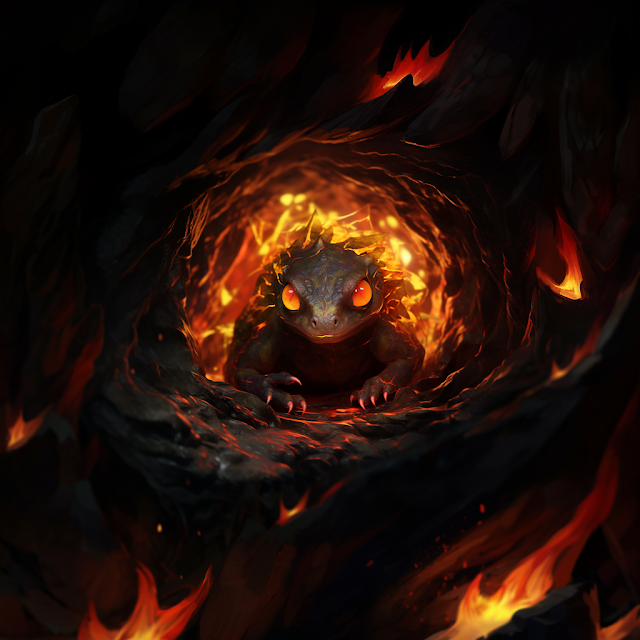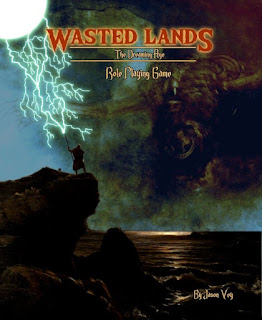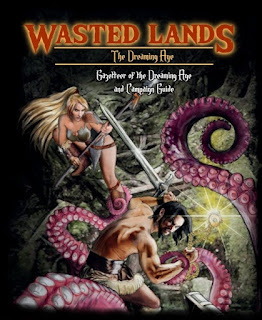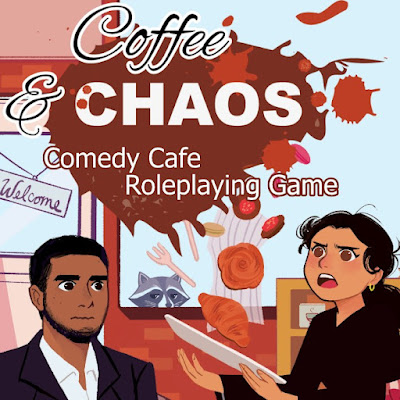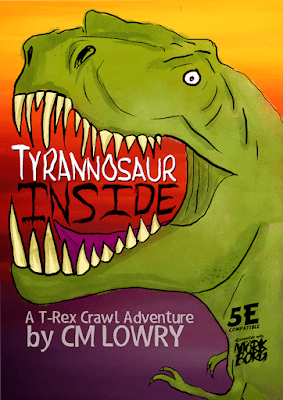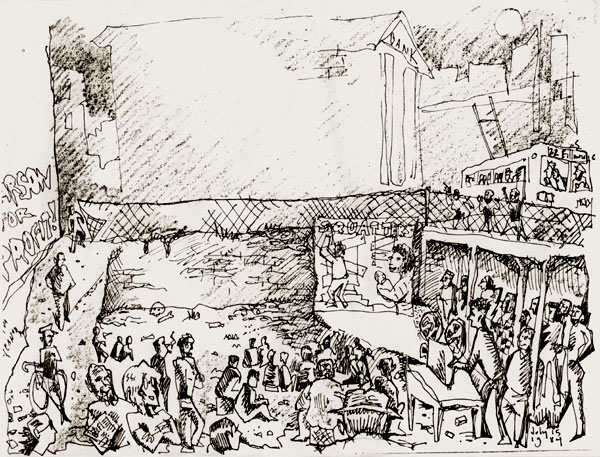 Everyday Heroes
Everyday Heroes is the spiritual successor to
d20 Modern. What
d20 Modern did for
Dungeons & Dragons, Third Edition in 2002,
Everyday Heroes does for
Dungeons & Dragons, Fifth Edition in 2202. It is designed to facilitate and handle roleplaying in the here and now, in the world we see outside our windows, on our television screens, and at the cinema. It can cover military or mercenary scenarios, police procedurals, urban fantasy and investigating the supernatural, visits to lost worlds, conspiracy thrillers, dinosaur rampages, face-offs against killer robots (whether from the future or not), run or defuse scams, and more. Although it does not delve into any one of these genres or scenarios in any depth, the core rulebook provides all of the rules and the mechanical tools the Game Master will need to run and her players to roleplay them. There are tweaks and adjustments throughout the rules to account for the modern genre, but the core rules remain faithful, and will be familiar, to anyone who has played
Dungeons & Dragons, Fifth Edition. In keeping with the setting, all of the Player Characters are human, and in keeping with the scale and concept of ‘Everyday Heroes’, are limited to between Levels one and ten. Further,
Everyday Heroes provides some twenty character Classes, divided into six Archetypes, modern skills, proficiencies, and feats, rules for modern gun combat, vehicles and chases, hacking, modern environments and hazards, and a bestiary. Essentially, all of the tools the Game Master needs to run a campaign today.
Everyday Heroes is published by
Evil Genius Games, following a successful
Kickstarter campaign and begins with the Player Character.
Everyday Heroes is a Class and Level roleplaying game, so it begins there, along with the six abilities—Strength, Dexterity, Constitution, Intelligence, Wisdom, and Charisma. A Player Character also has a Background and a Profession, which each provide languages known, Proficiencies, Iconic Equipment, Ability increases, and a Special Feature; and an Archetype and Class. Backgrounds can be Activist, Book Worm, Caregiver, Misfit, Social Butterfly, and more, whilst the professions include Academia, Creative, Law, Trades, and so on. There are six Archetypes—Strong, Agile, Tough, Smart, Wise, and Charisma—corresponding to the six abilities—Strength, Dexterity, Constitution, Intelligence, Wisdom, and Charisma. These are divided into three or four Classes. So, the Brawler and Heavy Gunner fall into the Strong Archetype, the Scoundrel and the Sharpshooter into the Agile Archetype, the Commando and the Bodyguard into the Tough Archetype, the Engineer and the Hacker into the Smart Archetype, the Hunter and the Sleuth into the Wise Archetype, and the Duellist and the Leader into the Charming Archetype. Together, Archetype and Class provides a Player Character’s Hit Dice, Defence rating, Proficiency Bonus, Talents, and Feats. The latter, Feats, are intrinsic part of Player Character development in
Everyday Heroes.
Creating a Player Character in
Everyday Heroes is a matter of making choices. A player selects his character’s Background, Profession, Archetype, and Class, and decides on the options they provide. He has the choice of determining his abilities randomly (roll four six-sided dice, discarded the lowest), assigning points, or using an array. The process is relatively straightforward and enables a player a wide range of character types. A player can decide to specialise in his choice of Background, Profession, Archetype, and Class. For example, a hacker could have Gamer as a Background, Information Technology as a Profession, and then the Smart Hero Archetype and the Hacker Class. Or he could mix and match to reflect wider experience. For example, an Ordinary Background could lead to the Emergency Services Profession and then be a Smart Archetype and the Scientist Class or a Tough Archetype and the Bodyguard Class. Notably though, the twenty Classes are also divided by complexity. Thus, the Heavy Gunner is a Simple Class, the Hacker a Complex Class, and the Leader a Medium Class in terms of their relative complexities. This is a useful guide for the players and can influence their choices when it comes to creating characters. Lastly, a player decides on his character’s Motivation, Attachments, Beliefs, Virtues, Flaws, and Quirks. As a Player Character advances in Level, he will improve via new or better Talents, Feats—some general, some specific to the Class and Archetype, Hit Points, and Proficiency Rating, so on.
Name: Henry Brinded III
Archetype: Mastermind Level: 1
Background: Bookworm
Profession: Military
Motivation: Duty Attachment: Family Belief: Not so much a statement of belief as a methodology
Role: Intellectual Virtue: Thoughtful Flaw: Nosy Quirk: Claps when excited
Strength 11 Dexterity 15 (+2) Constitution 15 (+2)
Intelligence 19 (+4) Wisdom 15 (+2) Charisma 16 (+3)
Defence: 14
Hit Points: 8
Passive Perception: 14
Proficiency Bonus: +2
Skills: Athletics +2, Computers +6, Insight +4, Investigation +8, Perception +4, Persuasion +7, Social Sciences +6, Stealth +4
Mental Expertise: Insight, Persuasion
Skill Proficiencies: Athletics, Computers, Insight, Investigation, Perception, Persuasion, Social Sciences, Stealth
Saving Throw Proficiencies: Intelligence, Wisdom
Equipment Proficiencies: Basic Equipment, Advanced Equipment, Military Equipment
Languages: English, Latin, Spanish
Talents: Plans, Genius, Know-It-All, You’re Doing It Wrong
Special Features: Have You Ever Read?, Servicemember
Everyday Heroes includes a lengthy equipment section. Starting equipment is handled via equipment packs, such as a Hacker Pack or a Weekend Warrior Pack, but the extensive list includes weapons of all types—from knives and 9 mm handguns to rocket launchers and tanks, vehicles from bicycles, golf carts, pickup trucks, and bulldozers to tanks, eighteen-wheeler trucks, wingsuits, and bullet trains. The vehicles and weapons are listed by type rather than name and model, but it is easy for the Game Master and player to assign these details if they want them in their game.
Mechanically, the core rules of
Everyday Heroes are the same as those of
Dungeons & Dragons, Fifth Edition. Throw a twenty-sided die and add Ability and Proficiency bonuses as appropriate, the aim being to roll equal to, or higher than, a Difficulty Class, which ranges from ten for Easy, fifteen for Challenging, twenty for Difficult, and so on. The rules for Advantage and Disadvantage also work as they do in
Dungeons & Dragons, Fifth Edition. Saving throws are based on the six abilities. Combat works the same too, but changes have been made to account for modern conflict. This includes firearms capable of suppressive fire and burst fire, as well as the use of explosive devices. Armour Class is replaced by a Defence value, which represents how hard a target is to hit, and can come from the cover a target is behind or the innate ability of a target to avoid being hit. Personal armour worn has an Armour Value. If the Penetration Value of an attack is higher than the Armour Value, the attack has penetrated the armour without reducing any of the damage, but if the Armour Value is higher than the Penetration Value, than an Armour Saving Throw can be made. A successful saving throw prevents all damage, but damages the armour, reducing its effectiveness, whilst a failed saving throw stops none of the damage.
The rules also cover environmental challenges such as dehydration and underwater combat, using companions—the Hunter Class has animal companions and the Engineer Class robot companions, laying and disabling traps, and of course, chases and vehicles. Vehicles have their own ratings for Strength, Dexterity, and Constitution, Armour Value, and in some cases, special abilities particular to the vehicle. Chases, whether on foot or by vehicle, are played out round by round, with the participants accumulating Chase Points. The aim is acquire more than the other participants before the end of the chase, by overcoming hazards or challenges like dodging around two men carrying a long rolled up carpet or leaping from one building to the next. Success grants a participant Chase Points, failure Chase Points to his opponent. The chase rules scale up to take account of vehicles and combat, including actions such as aiming at tires, ramming, and the like.
For the Game Master, there is advice on handling the rules, including chases—the latter with lots of complications to throw into the path of the Player Character in a wide variety of environments, different types of encounters, computer hacking and security, and more. The advice on hacking is to keep its use in check lest it become too powerful a feature of the game, but the rules handle it in a simple enough fashion, also avoiding it becoming too technical. They make a point that the Security and Deception skills are as equally important as the Computer skill. There is guidance too on common, but often difficult situations in modern set games, such as snipers, standoffs, and calling in the authorities, which is so obvious in its inclusion, but so very helpful. Optional rules cover sudden death, tracking ammunition, poison, injuries above beyond simple Hit Point loss, diseases, and recreational drugs. Advice for the Game Master begins with the basics and builds from there, including ‘Saying, “Yes, and…”’, giving time in the spotlight for each Player Character, and knowing the players and their play styles. It also examines adventure structure and creation and some of the key points of the genres that
Everyday Heroes is designed to cover—action, adventure, comedy, drama, horror, mystery, and survival.
Almost a fifth of
Everyday Heroes dedicated to opponents and allies, and it is here that
Everyday Heroes goes further than suggesting the various genres and settings and types of scenarios which can be run using its rules. There are numerous ordinary NPCs from all walks of life, but these are joined by cultists, crazed maniacs, mad scientists, and slashers. Alongside these, there are robots and animals, including a swarm of piranha, before the selection delves into historic and prehistoric NPCs, Science Fiction aliens and bugs, futuristic robots, mutants, and supernatural creatures from demons and vampires to zombies and werewolves. Variants are included too, so for zombies, there are zombie bloaters, zombie dogs, zombie lickers, and elite zombie warriors. These are all ready for the Game Master to use and build as part of a scenario.
Physically,
Everyday Heroes is very well presented. It is well written, easy to read, and comes with a good index. The artwork varies in quality a little, but is all decent enough. Also included is an appendix of the changes between
Everyday Heroes and
Dungeons & Dragons, Fifth Edition. This is useful, but would have been more useful if page references had been included.
There is one final addition to
Everyday Heroes which is not included in the core rulebook. This is access to a number of source and scenario supplements all based upon a surprising range of films. In fact, a range of films which nobody expected to see turned into roleplaying material despite their popularity in the hobby. These consist of
The Crow™ Cinematic Adventure,
Escape From New York™ Cinematic Adventure,
Highlander Cinematic Adventure,
Kong: Skull Island Cinematic Adventure,
Pacific Rim Cinematic Adventure, and
Total Recall Cinematic Adventure. These showcase at least, what
Everyday Heroes can do and are, equally, six good reasons to play
Everyday Heroes. Beyond these of course, there is plenty of scope for supplements which could explore the genres suggested in the
Everyday Heroes core rulebook, as well as other support and useable content.
Everyday Heroes takes the bones of the
Dungeons & Dragons, Fifth Edition rules and adjusts them with a surprising degree of comfort to fit the modern day. From that basis, the core rules fleshes out the here and now with a wide range of Player Character options and monsters and NPCs which together lend themselves to genres and settings both ordinary and outré. In between there is literally all of the rules, backed up with solid advice, needed to support a modern day set roleplaying campaign. With
Everyday Heroes, Evil Genius Games has not so much created the spiritual successor to
d20 Modern, as taken on its mantle.
